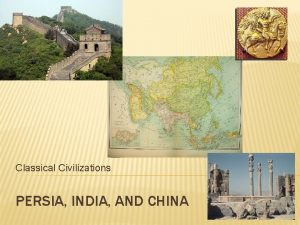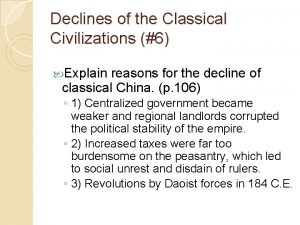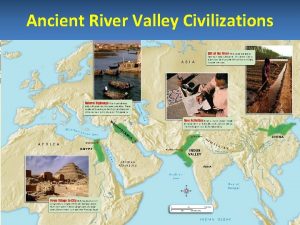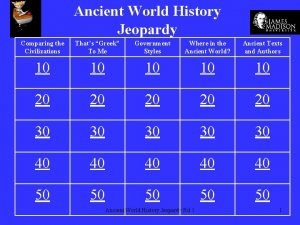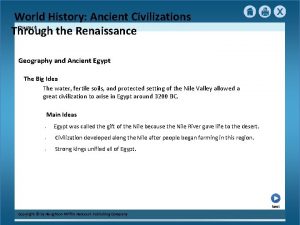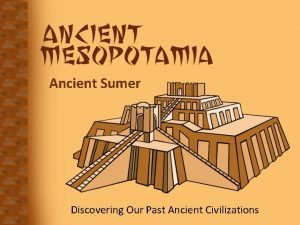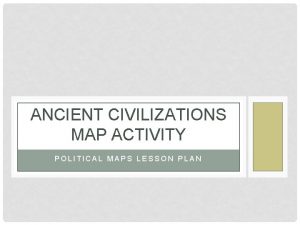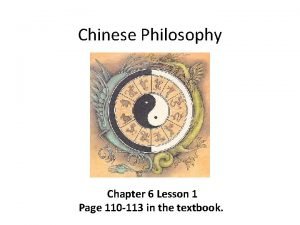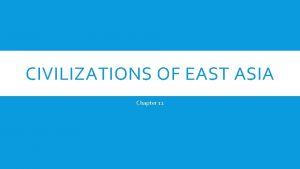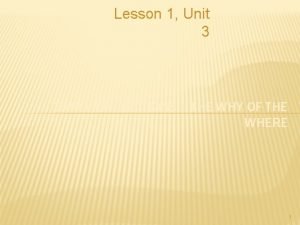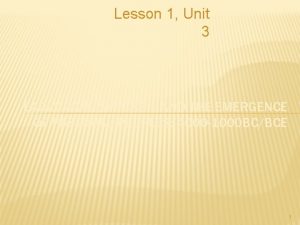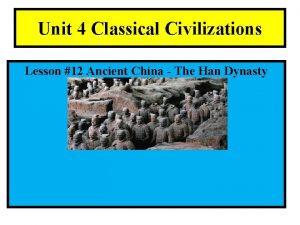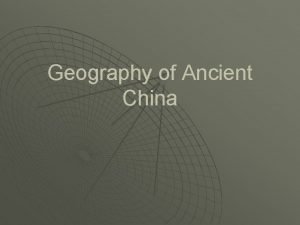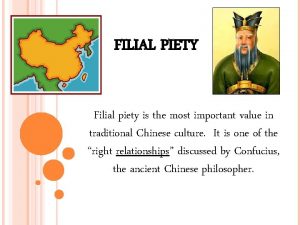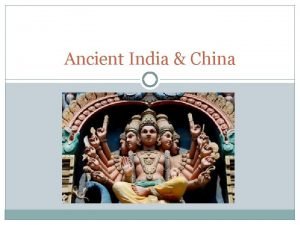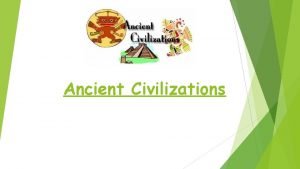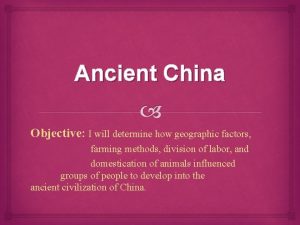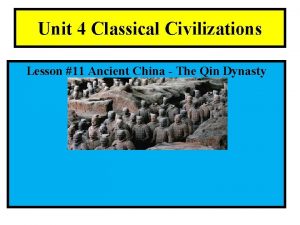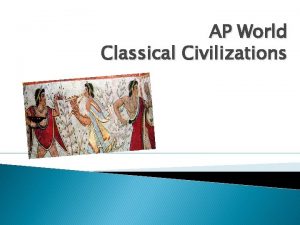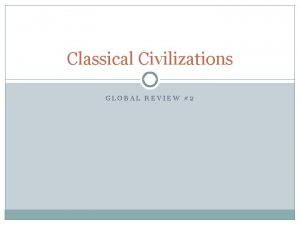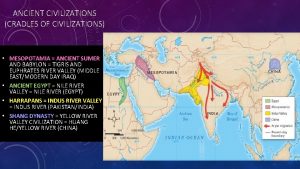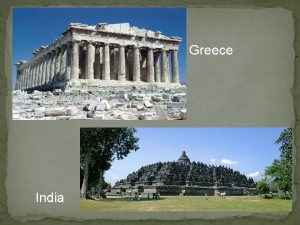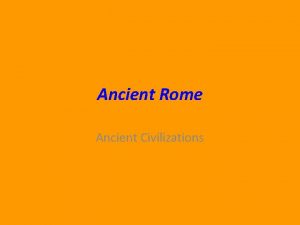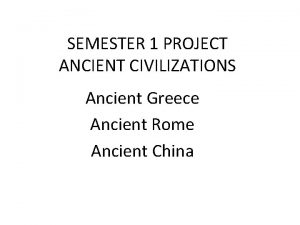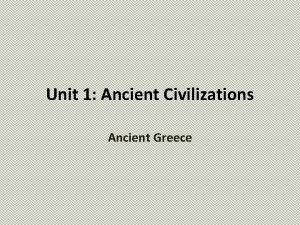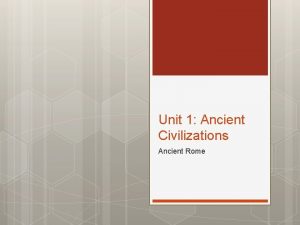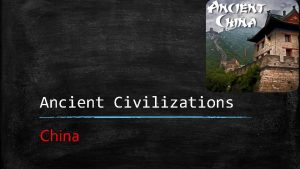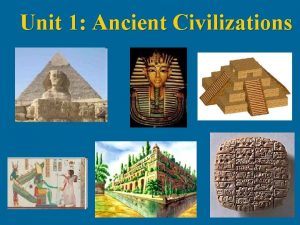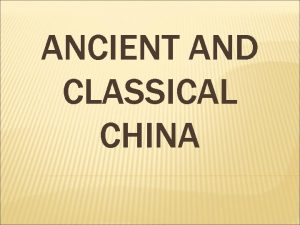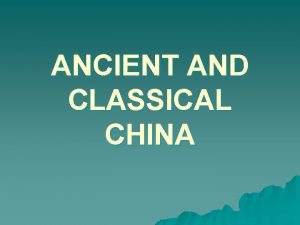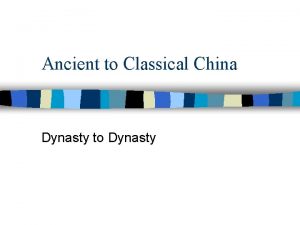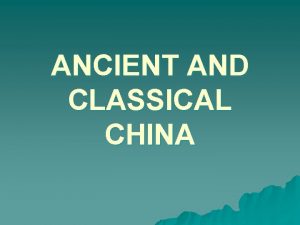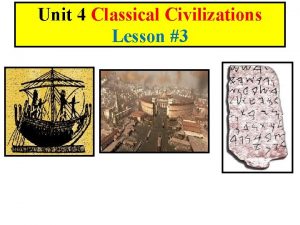Unit 4 Classical Civilizations Lesson 11 Ancient China







![Qin Achievements ü Unified China under 1 Emperor ü Standardized [made uniform] Chinese written Qin Achievements ü Unified China under 1 Emperor ü Standardized [made uniform] Chinese written](https://slidetodoc.com/presentation_image/036a0ca3da4d9fe1dc12c8dca27bd3e1/image-8.jpg)

















- Slides: 25

Unit 4 Classical Civilizations Lesson #11 Ancient China - The Qin Dynasty

Day 1 Aim: How should the Qin Dynasty be Remembered? Do Now: Observe the picture below. Why might these sculptures been made? NY State Standards 2 Common Core Standards RS 5, 7, 9, WS 1, 4, 8

Timeline of Chinese History so Far… Shang Dynasty • Shang Dynasty 1650 – 1027 BCE • Earliest Chinese civilization by the Yellow River • Earliest form of Chinese writing • Zhou Dynasty 1027 – 256 BCE • Feudalism • Believed Emperors receive the Mandate of Heaven. Zhou Dynasty If they lost it, then a new dynasty would take over (Dynastic Cycle).

I The Warring States 481 - 221 BCE A) Starting in 481 BBC China consisted of 7 “Warring States”. The Kingdom of Qin in the north became dominant due to Shi Huangti.

The Warring States Continued… B) Qin King Ying Zheng used spies and bribery. He appointed his generals based on ability rather than their family status. In less than a decade, he conquered all 6 enemy kingdoms. C) Qin King Ying Zheng proclaimed himself Shi Huangti (first emperor) of China in 221 BCE. Shi Huangti

II Qin Dynasty 221 – 207 BCE A) The Qin Dynasty was the first centralized Chinese government to be ruled by an emperor (Shi Huangti). B) Shi Huangti ended feudalism. In its place he created the first Chinese bureaucracy: - Divided China into 36 districts, each governed by emperor appointed officials. - All the royal families of the conquered 6 enemy kingdoms were forced to move to his capital city of Xianyang to spy on them.

Qin Dynasty 221 – 207 BCE Continued… Liu Bang Epang Gong Qin Palace
![Qin Achievements ü Unified China under 1 Emperor ü Standardized made uniform Chinese written Qin Achievements ü Unified China under 1 Emperor ü Standardized [made uniform] Chinese written](https://slidetodoc.com/presentation_image/036a0ca3da4d9fe1dc12c8dca27bd3e1/image-8.jpg)
Qin Achievements ü Unified China under 1 Emperor ü Standardized [made uniform] Chinese written characters ü Standardized the currency (copper coins) ü Began the Great Wall of China and the Grand Canal. ü Terra Cotta Army in Xian

The Terra Cotta Army The first Qin Emperor, Qin Shi Huangti, had an “army” of 6000+ life-size statues of soldiers, chariots, horses and weapons buried with him. Each statue’s face is different!


Great Wall of China The Great Wall of China is a system of defensive walls and towers. It was built between 476 BCE and 1644 CE. ü 5500 miles long! ü It was built to protect China from Mongol invasions from the north, though it didn’t always succeed. The Great Wall of China is often called the “longest cemetery on Earth”, as over 1, 000 workers died while building it. Human remains were buried under sections of the wall.


Great Wall Watch Tower

Activity Day 1 • Students will close read annotate “Biography of Qin Shihuangdi” answer differentiated text based questions. • Group will discuss answers to questions and choose one for closing discussion.

Text Based Questions Biography of Qin Shihuangdi • What does the author mean when he says that Qin Shihuangdi ruled with an “Iron Fist”? • How were the Terra Cotta figures discovered? • How did Qin Shihuangdi die? • What was Qin Shihuangdi’s most important contribution?

Closing Day 1 • Exit Slip Question: What were some Qin achievements? • Homework: # 11 on the Unit 4 Outline

Day 2 Aim: How should the Qin Dynasty be Remembered? Do Now: Were workers buried in the Great Wall of China? How do we know? NY State Standards 2 Common Core Standards RS 5, 7, 9, WS 1, 4, 8

Legalism under the Qin Legalism was a philosophical belief that human beings are more inclined to do wrong than right because they are motivated entirely by self-interest. Legalism became the official state philosophy of the Qin Dynasty. Fear and control were the key features of legalism. ü If a person did not obey the law, others were required to report him. If not, they were quartered or beheaded. ü Obedience rewards. Disobedience sent to work on building projects such as the Great Wall of China, the Grand Canal, or roads. ü Scholarship was strongly suppressed and literacy declined. Shi Huangti believed that uneducated people were easier to control. burning of books and execution of scholars.

Great Wall of China 1. The Great Wall of China is a system of defensive walls and towers. It was built in stages between 476 BCE and 1644 CE to protect China from the Xiongnu, Mongols, and other “barbarian” invaders from the north. 2. The Great Wall winds up and down across deserts, grasslands, mountains and plateaus, stretching 5, 500 miles from east to west. 3. It did not succeed in keeping out invaders. However, it has become a symbol of Chinese achievement. 4. While it was begun under the Qin Dynasty, the wall we see today was mostly built during the Ming Dynasty (1368 – 1644 CE). The Great Wall of China is often called the “longest cemetery on Earth”, as over 1, 000 workers died while building it. Archaeologists have even discovered human remains buried under sections of the wall.

The Grand Canal (1, 200 miles in length) is the longest man-made waterway. It was begun under the Qin dynasty, but began to be linked together under the Sui.

Decline of the Qin There were peasant revolts due to the harsh rule. In 207 BCE, a peasant army led by Liu Bang in 206 BCE seized the Qin capital Xianyang, ending the rule of the Qin.

Activity Day 1 • Students will read a Primary Source Handout on legalism. Students will complete the questions in groups. • Groups will discuss answers to questions and choose one for closing discussion.

Closing Day 2 • Exit Slip Question: What were the causes of the Decline of the Qin Dynasty? • Homework: # 11 on the Unit 4 Outline

Summary Questions 1. Why did the Qin Empire made legalism their official policy? Do you think legalism is a good way to run a government?

Key Vocabulary ü Grand Canal ü Great Wall of China ü Legalism ü Liu Bang ü Qin Dynasty ü Qin Shi Huangti ü Terra Cotta Army ü Warring States
 The two classical civilizations of ancient india were the
The two classical civilizations of ancient india were the Lesson 1 early civilizations
Lesson 1 early civilizations Ancient india vs ancient china
Ancient india vs ancient china What caused the decline of classical civilizations
What caused the decline of classical civilizations Yellow river civilization map
Yellow river civilization map Civilization ppt template
Civilization ppt template Ap world jeopardy
Ap world jeopardy River valley civilizations map
River valley civilizations map Ancient civilizations through the renaissance
Ancient civilizations through the renaissance Discovering our past ancient civilizations
Discovering our past ancient civilizations Four corners of civilization map
Four corners of civilization map Lesson 1 schools of thought in ancient china
Lesson 1 schools of thought in ancient china Guided reading activity civilizations of east asia
Guided reading activity civilizations of east asia Lesson 1 the peoples of north america and mesoamerica
Lesson 1 the peoples of north america and mesoamerica Lesson 1 early civilizations
Lesson 1 early civilizations Unit 3 lesson 1 sumer and mesopotamia
Unit 3 lesson 1 sumer and mesopotamia Classical biotechnology
Classical biotechnology Ancient china zhou dynasty
Ancient china zhou dynasty Ancient china social pyramid
Ancient china social pyramid Ancient china confucius
Ancient china confucius Ancient china deserts
Ancient china deserts Why is filial piety important
Why is filial piety important Ancient china confucius
Ancient china confucius Ancient china confucius
Ancient china confucius Huang he
Huang he Ancient china social class
Ancient china social class
